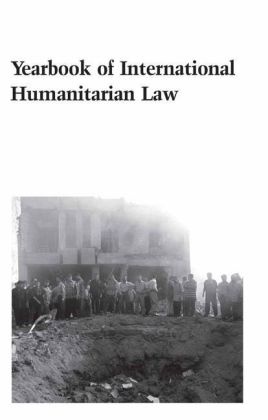Read more
The need to enforce and further develop international legal protection after 11 Sep- 3 tember 2001 has been discussed in prominent fora before. A wide range of issues (self-defence, humanitarian law, human rights, national laws and regulations, cr- inal sanctions) must be considered in this context. Different phases of application of the law (international and non-international armed conflict, peace enforcement, post-conflict peace building, etc. ) are affected. Misconceptions have been propa- 4 gated at the highest government levels and have created new problems rather than solving existing ones. Among expert observers, such developments may cause feelings of déjà vu. In the years after the adoption of the 1977 Additional Protocols, when one might have expected that all efforts would be taken to accelerate the ratification of these new instruments and ensure respect for their provisions, Protocol I was criticised as 5 being in the service of terror, an allegation that won certain influence although it 6 was promptly and convincingly refuted. Concerns expressed more recently that the application of certain rules of humanitarian law might impede the fight against 7 terrorism may stem from similar ways of thinking. They have made it necessary to explicate in detail that terrorist acts when committed during armed conflict are - rious violations of humanitarian law, prohibited without any exception in the Geneva Conventions, their Additional Protocols and other international treaties 3. 'The attack on the World Trade Center' ; J. J.
List of contents
Articles.- International Humanitarian Law in the Twenty-First Century.- International Humanitarian Law After September 11: Challenges and the Need to Respond.- The Conduct of Hostilities During Operation Iraqi Freedom: An International Humanitarian Law Assessment.- Off Target on the Iraq Campaign: A Response to Professor Schmitt.- Iraq and the Law of Occupation: New Tests for an Old Law.- Jus Ad Bellum, Jus in Bello and Non-International Armed Conflicts.- Violations of International Humanitarian Lawby United Nations Forces and Their Legal Consequences.- Current Developments.- The Year in Review.- International Criminal Courts Round-Up.- Breaching International Law to Ensure its Enforcement: The Reliance by the ICTY on Illegal Capture.- The United Nations Convention on Certain Conventional Weapons of 1980: Its Recent Development and Increasing Significance.- The Journalist's Right to Information in Time of War and on Dangerous Missions.- The Protection of Refugees in International Law Post September 11 2001.- The Proposed Trials by the US Military Commissions.- The International Criminal Court's Trust Fund for Victims: Challenges and Opportunities.- The Work of the Eritrea-Ethiopia Claims Commission.- Correspondents' Reports.- Correspondents' Reports.
Summary
The world's only annual publication devoted to the study of the laws of armed conflict, the Yearbook of International Humanitarian Law provides a truly international forum for high-quality, peer-reviewed academic articles focusing on this highly topical branch of international law. The Yearbook also includes a selection of documents from the reporting period, many of which are not accessible elsewhere, and a comprehensive bibliography of all recent publications in humanitarian law and other relevant fields. Ease of use of the Yearbook is guaranteed by the inclusion of a detailed index.
Distinguished by its topicality and contemporary relevance, the Yearbook of International Humanitarian Law bridges the gap between theory and practice and serves as a useful reference tool for scholars, practitioners, military personnel, civil servants, diplomats, human rights workers and students.

